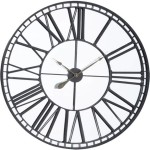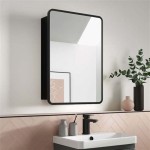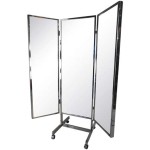Midcentury Modern Mirrors: Reflecting a Timeless Aesthetic
Midcentury Modern (MCM) design, a movement characterized by its clean lines, organic shapes, and functional minimalism, continues to captivate homeowners and designers alike. Within this enduring aesthetic, mirrors play a crucial role, serving not only as practical reflective surfaces but also as significant design elements that enhance the overall atmosphere of a space. Midcentury Modern mirrors are more than just utilitarian objects; they are carefully considered additions that contribute to the era's defining characteristics of openness, light, and understated elegance.
The period spanning roughly from the mid-1940s to the late 1960s, saw a significant shift in design philosophy. Post-World War II, there was a desire for progress, functionality, and a connection to nature. These ideals translated into the design of furniture, architecture, and decorative objects, including mirrors. Designers sought to create pieces that were both aesthetically pleasing and practical for modern living. The emphasis was on simplicity, avoiding excessive ornamentation and embracing natural materials whenever possible. The result was a design language that felt fresh, optimistic, and accessible to a broader audience.
Midcentury Modern mirrors stand out due to their distinct characteristics. They typically feature sleek frames crafted from materials like wood, metal, or a combination of both. The shapes are often geometric – circles, squares, rectangles, and ovals being the most common – but are sometimes softened with rounded edges or organic curves. The use of color is generally restrained, with natural wood tones, black, white, and metallic finishes dominating. Detailing is kept to a minimum, prioritizing clean lines and a focus on the quality of materials and craftsmanship. The overall effect is one of understated elegance, where the mirror serves as a functional art piece that complements the surrounding décor.
Key Points Defining Midcentury Modern Mirrors
Analyzing the specific aspects of Midcentury Modern mirrors helps to fully appreciate their design principles and enduring appeal. This involves examining form, materials, and intended function. The following points are key characteristics.
Simplicity of Form and Function
The most prominent characteristic of Midcentury Modern mirrors is their simplicity. Gone are the ornate embellishments and heavy frames of previous eras. Instead, the emphasis is placed on clean, unadorned lines. Mirrors often feature simple geometric shapes, such as circles, squares, and rectangles, or variations thereof. The frames are typically slim and understated, allowing the reflective surface to take center stage. This minimalist approach is not merely aesthetic; it reflects the broader MCM philosophy of prioritizing function and practicality. The mirror is intended to reflect light, create the illusion of space, and serve its primary purpose without unnecessary distraction. Even when curves are incorporated, they are typically gentle and organic, maintaining a sense of balance and visual harmony.
The size of the mirror also plays a crucial role in its overall impact. Large mirrors were often used to visually expand smaller spaces, a particularly important consideration in the post-war housing boom where many homes were designed with efficiency in mind. Smaller mirrors, often grouped together or used as decorative accents, provided a subtle reflective quality without overwhelming the space. Whether large or small, the focus remained on integrating the mirror seamlessly into the room's design, rather than making it a showy or ostentatious focal point.
The functional aspect extends to how the mirror is mounted or displayed. Many MCM mirrors were designed to be easily hung on the wall, often with simple, concealed hardware. Others were designed to lean against the wall, creating a more casual and relaxed aesthetic. Still others were integrated into furniture pieces, such as dressers or vanities, providing both functionality and visual interest. The overall goal was to create a design that was both practical and aesthetically pleasing, reflecting the MCM ethos of form following function.
Material Choices and Craftsmanship
The materials used in Midcentury Modern mirrors are another defining characteristic. Designers favored natural materials like wood, particularly teak, walnut, and oak, which were valued for their warm tones and rich grains. These woods were often used to create the frames, providing a natural and organic contrast to the reflective surface of the glass. Metal was another popular choice, particularly brass, chrome, and steel. Metal frames offered a sleek, modern look and were often used in combination with wood to create visually interesting contrasts. The choice of materials reflected the broader MCM emphasis on quality, durability, and a connection to the natural world.
Craftsmanship was also highly valued in Midcentury Modern design. Mirrors were often manufactured using techniques that highlighted the natural beauty of the materials. Wood frames were carefully crafted and finished to reveal the wood grain, while metal frames were meticulously polished to a high shine. The focus was on creating pieces that were not only aesthetically pleasing but also built to last. This emphasis on quality and craftsmanship is one of the reasons why many MCM mirrors are still highly sought after today. They represent a commitment to design excellence and a belief in the value of well-made objects.
The types of glass used in Midcentury Modern mirrors also contributed to their overall aesthetic. Many mirrors featured high-quality glass that provided a clear and distortion-free reflection. Some mirrors were also tinted or antiqued to create a more subtle and sophisticated look. The glass was often carefully cut and polished to ensure a smooth and flawless surface. The overall goal was to create a mirror that was not only functional but also a beautiful and refined object in its own right.
Integration with the Midcentury Modern Interior
Midcentury Modern mirrors are not designed to stand alone; they are intended to be integrated seamlessly into the overall aesthetic of the room. They complement the clean lines, organic shapes, and minimalist décor that define the MCM style. Mirrors are often used to enhance the sense of light and space in a room, reflecting natural light and creating the illusion of greater depth. They can also be used to create focal points or to highlight specific architectural features. The key is to use mirrors strategically to enhance the overall feeling of the space, rather than simply adding them as an afterthought.
The placement of a Midcentury Modern mirror is just as important as its design. Mirrors are often placed in entryways to create a welcoming and inviting atmosphere. They can also be used in living rooms to reflect light and create a sense of openness. In bedrooms, mirrors are often incorporated into dressers or vanities, providing both functionality and visual appeal. The placement of the mirror should be carefully considered to maximize its impact on the overall design of the room.
The style of the mirror should also complement the other furnishings and décor in the room. A simple, minimalist mirror might be a good choice for a room with clean lines and sparse furnishings, while a more decorative mirror with a wood or metal frame might be better suited for a room with more texture and detail. The key is to create a cohesive and harmonious look that reflects the overall MCM aesthetic. The use of color is also important. Mirrors with frames in natural wood tones or neutral colors will typically blend in seamlessly with the surrounding décor, while mirrors with frames in bolder colors can be used to add a pop of visual interest.
In essence, the Midcentury Modern mirror is a carefully considered component of a larger design vision. Its form, materials, and placement are all thoughtfully chosen to enhance the overall aesthetic and functionality of the space. It is a testament to the enduring appeal of MCM design, a style that continues to inspire and influence homeowners and designers around the world.

Mid Century Modern Mirror Geometric Wall Large Wooden
:strip_icc()/cdn.cliqueinc.com__cache__posts__262916__midcentury-modern-mirrors-262916-1531442364113-main.700x0c-7879f4f4ff58442ea8bac9743b6a3c76.jpg?strip=all)
Midcentury Modern Mirrors To Make Your Room Look Bigger

Mid Century Asymmetrical Wood Floor Mirror 72 Cm W X 167 H West Elm

Mid Century Asymmetrical Wood Wall Mirror 39 W X 45 H West Elm

Wallbeyond Mid Century Asymmetrical 20 In W X 25 H Wood Brown Satin Wall Mirror 342103 The Home Depot

10 Mid Century Modern Mirrors To Your Interior Designs Unique Blog

Mid Century Modern Square Wall Mirror In Solid Brazilian Hardwood Frame 1960s For At Pamono

Free On Mid Century Rectangle Full Length Floor Mirror Wood Frame 69 X 20 Leaning Walnut Homary Ca

Midcentury Brass Wall Mirror Modern Interior Decor Mid Century House Centry

Mid Century Modern Solid Wood Mirror By Eriksmålaglas Sweden Ca 1950s H Gallery








